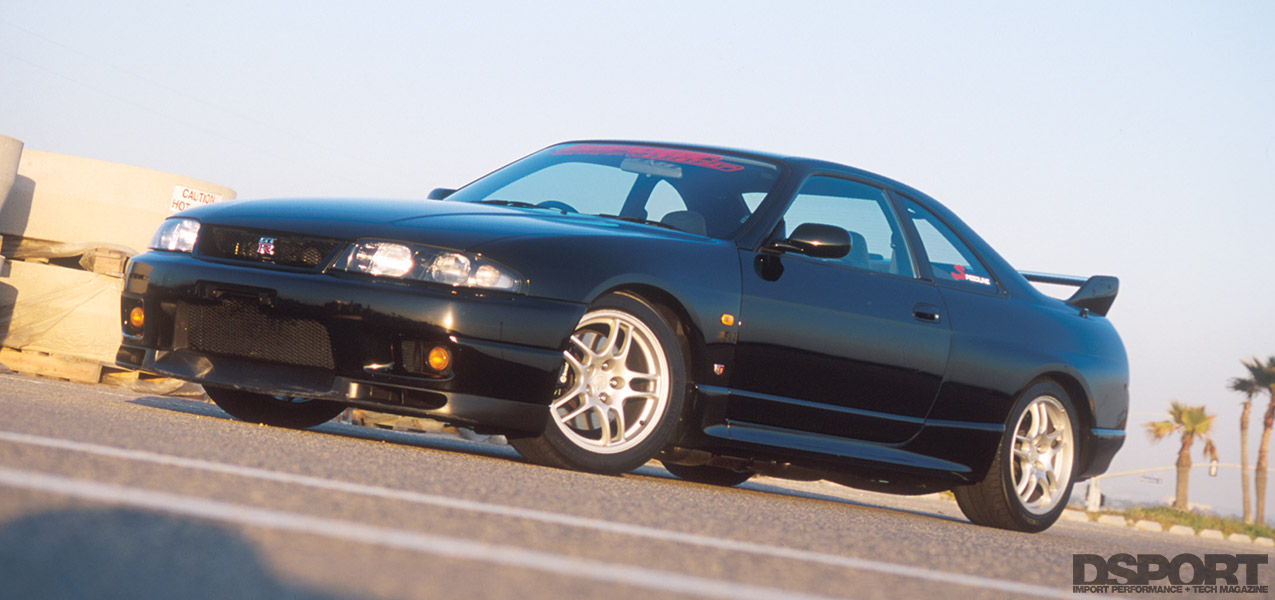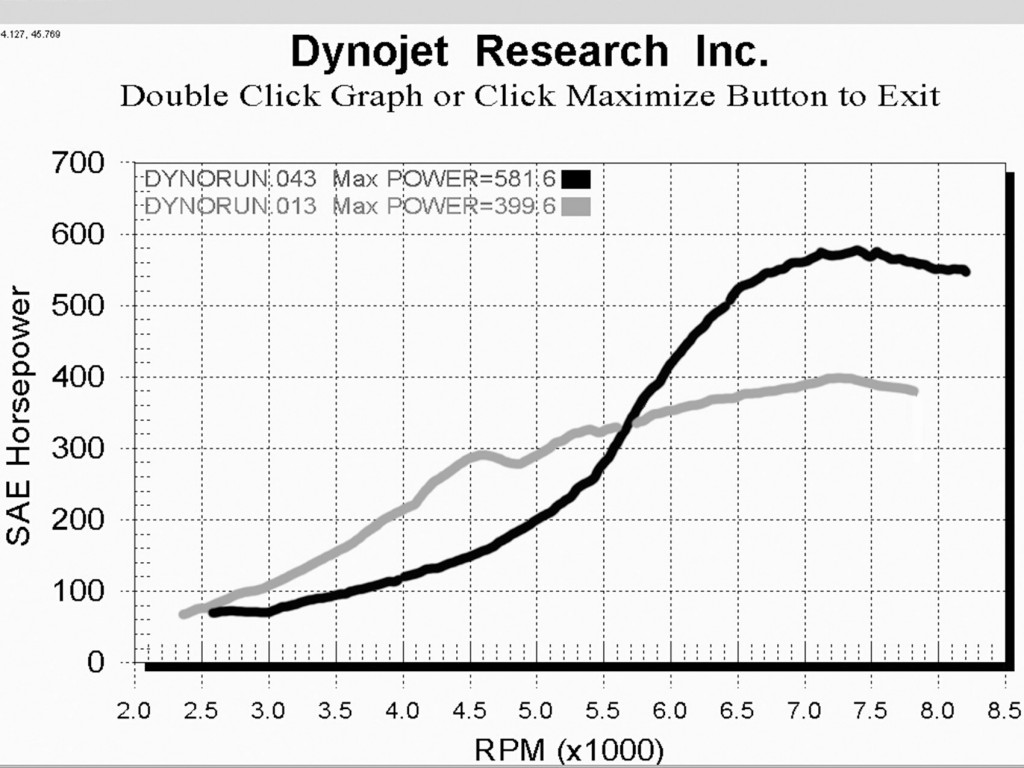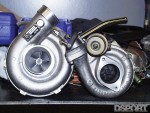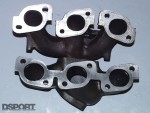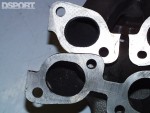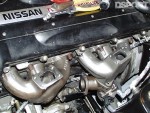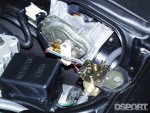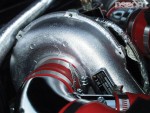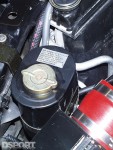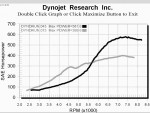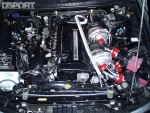On the Road: First Impression
Oh my God. What have we done? With no boost until past 6000 rpm, we started to question our sanity. Why we knew that this turbo system wasn’t going to be a perfect match for the stock engine, we were still amazed at how big of a mismatch we had made. However, this would be the right turbo system to get the job done once we got the rest of the components in line.
We took a trip over to XS Engineering in Huntington Beach, California for a round of dyno tuning on the Dynojet. Dialing in the ignition and fuel curves for the new turbo allowed us to generate a peak of over 580 horsepower at the wheels on the stock long block. However, the dyno chart shows the tradeoff with the Ginormous turbos we selected. Below 5700 rpm, we traded away a great deal of horsepower.
To the Track
After getting the data from the Dyno, it was time to hit the track. The NDRA had an event in Palmdale and we were ready to go make some passes. We made our first pass. The Skyline bogged hard, crawled to a 2.103 60-foot time and managed only a 13.793 @ 109.682. We had issues. The primary issue was that the turbine housings were so large that we did not make boost in First or Second. Still, we had no means of fixing the problem and more track time to get more data so it was back to the staging lanes. On the second pass, we slipped the clutch excessive to generate a little boost on the launch. Although the 60-foot only improved to a 2.08, we had boost in Second. Now, we ran a more respectable 12.663 at117.431.
 Ok, so we gained more than a second. We are on the right track. Let’s try again with a third pass. This time the 60-foot fell to a 2.239 due to too much clutch. However, full boost was achieved in Second and beyond, so the car delivered a 12.110 at 125.97 mph. Just when progress was being made, the staging lanes were closed. We had qualified number one in our class and we’d be back the following day.
Ok, so we gained more than a second. We are on the right track. Let’s try again with a third pass. This time the 60-foot fell to a 2.239 due to too much clutch. However, full boost was achieved in Second and beyond, so the car delivered a 12.110 at 125.97 mph. Just when progress was being made, the staging lanes were closed. We had qualified number one in our class and we’d be back the following day.
As it turns out, there were only two cars in our class. We ran a first round final. This time, the clutch delivery was just right. Into the 11s, with an 11.793 at 126.15 mph.
The Analysis
Back at home, we analyzed the data from the runs to establish where to go with the project. Crunching the numbers on our Drag Race Analyzer program, we believe that we have the power to run in the 10s. What we are missing is boost response to get our 60-foots down to the 1.7- or 1.6- second range where they should be with an all-wheel-drive.
The Next Step
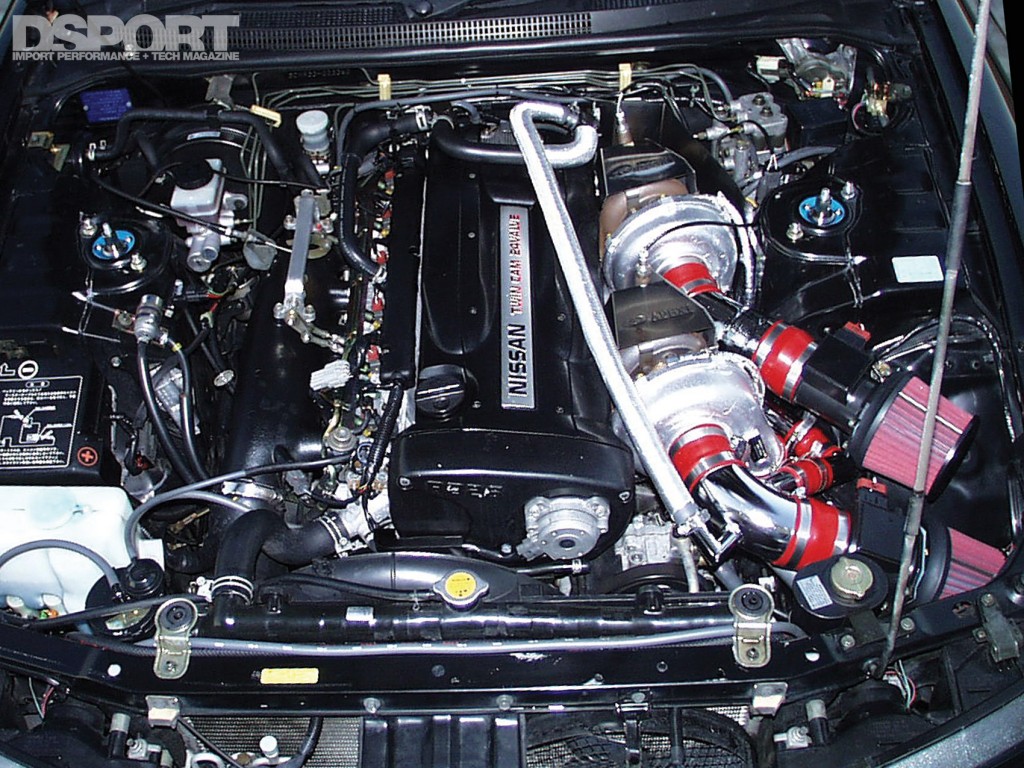
We’re trying to get into the 10s with the stock long block. As for peak horsepower, our calculations and our trap speed indicate that we have enough peak power. It’s the low-end and mid-range that needs to be improved to get the car out of the hole much quicker.
A built engine would probably do the trick and wake-up the turbos. However, we are going to try another approached. Since there are different turbine housings available for our turbos, we are going to try a set of the much smaller P13 turbine housings. In theory, this should do the trick. The smaller turbine housings should allow the stock engine to supply a higher velocity flow to the turbine wheels on the turbochargers. In turn, full boost should be realized sooner. If for every action, there is a reaction we need to look at the tradeoff to the smaller turbine housings. For the smaller turbine housings, the horsepower flow potential will be less than the larger housing. Thus we may kill top end power. However, we hope that at just 600 horsepower that the smaller housings will flow enough. Find out next month, who is wrong and who is right. Will boost response dramatically improve? Can Project GT-R have a respectable 60-foot time? Will top end horsepower suffer? Stay tuned.


